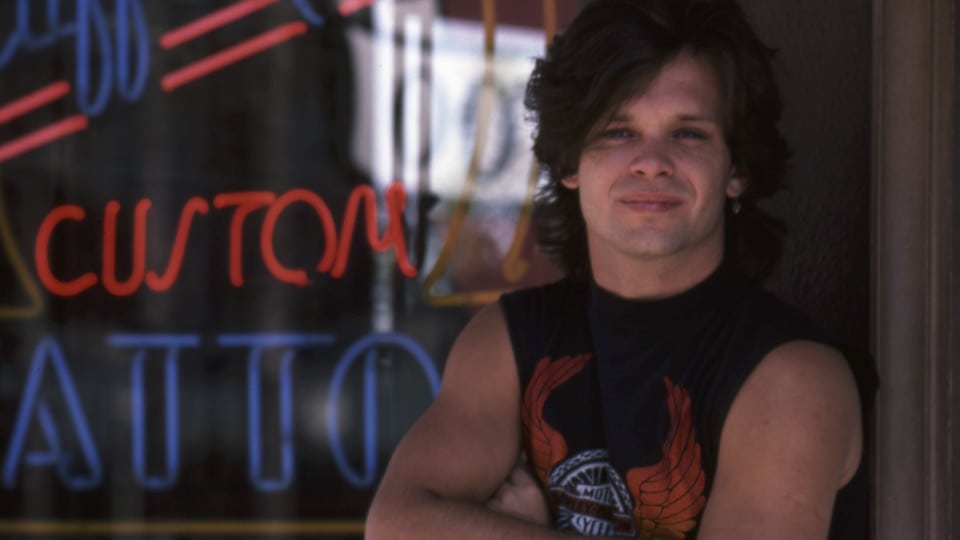Whether it was his little ditty about Jack and Diane or that one about heartache being painful and pleasurable, 1982 signaled the arrival of John Mellencamp for a generation of high schoolers. But while American Fool seemed to appear from nowhere, it was the culmination of years of struggle. Regardless of what preceded it, the career that followed included 22 Top 40 hits, 13 Grammy nominations, and inductions into both the Rock and Roll Hall of Fame in 2008 and the Songwriters Hall of Fame this year. And to think it all really started with classics like “Hurts So Good” and “Jack and Diane.”
Related Content: ”Country for Folks Who Don’t Like Country”
Please remember that the late’70s/early ’80s was a period when the most successful musical styles were undoubtedly disco (Bee Gees), New Wave (Duran Duran), hard rock (Led Zeppelin), soft rock (Little River Band) and country rock (Eagles). Throughout this time Mellencamp was perfecting his own style which would draw from as many of these influences as he could. And though he’d had a few charting songs previously — “I Need a Lover (That Won’t Drive Me Crazy)” and “Ain’t Even Done with the Night” — he was still an artist searching for own unique style. Plagued by terrible management deals, his early albums such as Chestnut Street Incident (1976), A Biography (1978), John Cougar (1979) and Nothing Matters And What If It Did (1980) received little attention.
Disheartened but not ready to give up, he and producer Don Gehman created a breakthrough song with a structure with a bold intro and exit, which in the middle basically took on a folksy, storytelling style, similar to “In the Air Tonight” by Phil Collins. And so, with help from ex-David Bowie guitarist Mick Ronson, “Jack and Diane” was born. (Ronson was specifically responsible for the now classic choir-like-vocals in the bridge of the song, which sang about “Bible man cleansing souls.”)
What made American Fool different was its combination of snarky guitar-chord driven “boom-cha” coupled with a straightforward narrative about everyday people having everyday moods and everyday feelings. His ability to tap into his Midwestern upbringing and even his challenges with corporate indifference reflected a part of who we thought we were and still are.
Looking back now, the success of Mellencamp’s album is staggering when you compare it with other albums released that same year: Michael Jackson’s Thriller, Prince’s 1999, Duran Duran’s Rio, The Clash’s Combat Rock, Judas Priest’s Screaming for Vengeance, the Allan Parsons Project’s Eye in the Sky, et cetera. In short, this was a year in which major artists were releasing some of their most successful albums to date. Yet American Fool didn’t sound like any of those others. It was neither slick nor highly-produced, neither synthed nor dissonant. Perhaps it came closest to Tom Petty’s Long After Dark which also made it into the Top 10 when it peaked at Number Nine. It’s just that American Fool made it all the way to Number One.
And think of the songs! “Hurts So Good” — a great teenage love song — may have been inspired by a phrase used in reference to acupuncture but its strong four-on-the-floor drum pattern, punchy power chords, and a soaring organ backdrop propelled it to Number Two; “Hand to Hold On To,” though perhaps lesser radio-friendly, still spoke to our common need for affection; “Can You Take It” used a crunchy blues-rock shuffle and harmonica to evoke a Stones vibe while asking an adventurous girl whether she can deliver “all the way down”; while “Weakest Moments,” with its beautiful acoustic guitar supported by accordion and flute, found Mellencamp singing sadly about a young woman who has seen better days. And then there’s “Jack and Diane.”
The success of American Fool allowed Mellencamp the freedom to delve even more deeply into Midwestern sensibilities via a string of remarkable tunes like “Pink Houses” from Uh Huh (1983) and “Paper and Fire” from The Lonesome Jubilee (1987) but the entirety of the LP American Fool (remastered with a bonus titular track in 2005) is really where that story truly began.
-Photo Credit: Musician Johnny Cougar aka John Cougar Mellencamp poses for a portrait in August 1982 in Detroit, Michigan. (Photo by Michael Marks/Michael Ochs Archives/Getty Images)




0 comments on “John Mellencamp’s American Fool: Snarky Guitar With Straightforward Truths”